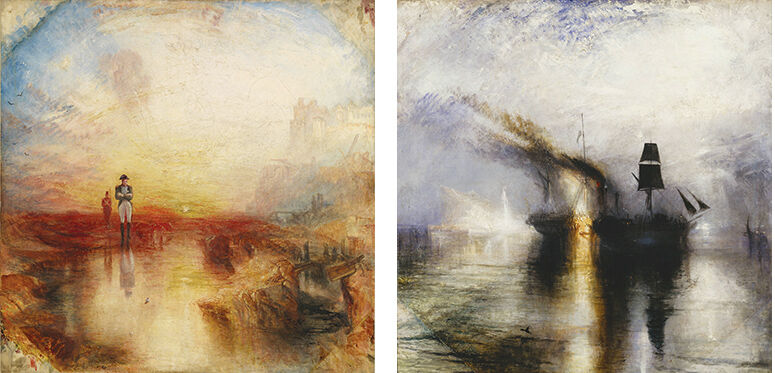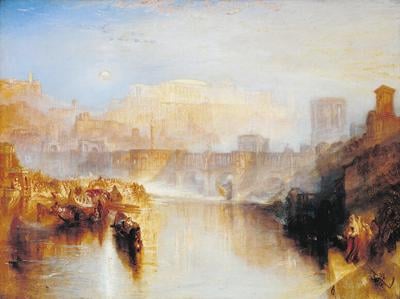Here at last is the Turner who matters – the man who invented modern painting. —Jonathan Jones, Guardian
There are some artists whose work is rarely shown and anxiously awaited. One of them is J.M.W. Turner (1775–1851), the iconic British artist best known for his ethereal watercolors. Any chance to see his work would be worth a much longer trip than the ninety minutes or less it takes to get to Toronto. Entitled J.M.W. Turner—Painting Set Free, a survey of over fifty of the artist’s final works opened in late October and runs through January 31 at the Art Gallery of Ontario. Most of the paintings are from London’s Tate Gallery, where the show originated before it traveled to the Getty in Los Angeles and San Francisco’s de Young. This is the only chance Western New Yorkers will have to see these works in North America for—probably—decades.
Turner is considered one of the greatest and most innovative watercolorists of all time; his interpretations of landscapes, cityscapes, and mythological scenes also broke new ground in genres that had been common painterly fodder for centuries. Turner depicted weather, light, the sea, and other natural phenomena using radical techniques. While contemporaries such as Gainsborough used delicate brush strokes and valued attention to detail above all, Turner—particularly in his later years—started experimenting, creating atmospheric effects by applying pigments directly on water-soaked paper and layering his works with transparent veils of wash. The artist also experimented continually with oil painting, using his fingers and palette knives as well as brushes. He’d try anything, often with not-so-great results; some paintings cracked and flaked, unable to hold up against the artist’s unconventional methods.

From left: J.M.W Turner’s War: The Exile and the Rock Limpet (1842), Peace - Burial at Sea (1842)
The obvious appeal Turner has today is that he appears to be presciently anticipating the arrival of not just the Impressionist era but even later, when accuracy in art forever ceases to become an overarching goal. As the artist said, "Atmosphere is my style. Indistinctness is my forte." It is no surprise that Claude Monet, who painted long after Turner’s death, was one of his biggest fans. It is somewhat surprising that Turner did not suffer the outrage directed at many of the Impressionists; rather, his eccentricity was embraced by the viewing public and his many patrons. He died a rich man and was buried in St. Paul’s Cathedral.
Elizabeth Licata is editor of Spree. Visit ago.net for more information on J.M.W. Turner: Painting Set Free.
For more on exhibits "On View" at area galleries, pick up the latest issue of Buffalo Spree at your nearest location, or subscribe so you don't miss another issue.
















(0) comments
Welcome to the discussion.
Log In
Keep it Clean. Please avoid obscene, vulgar, lewd, racist or sexually-oriented language.
PLEASE TURN OFF YOUR CAPS LOCK.
Don't Threaten. Threats of harming another person will not be tolerated.
Be Truthful. Don't knowingly lie about anyone or anything.
Be Nice. No racism, sexism or any sort of -ism that is degrading to another person.
Be Proactive. Use the 'Report' link on each comment to let us know of abusive posts.
Share with Us. We'd love to hear eyewitness accounts, the history behind an article.